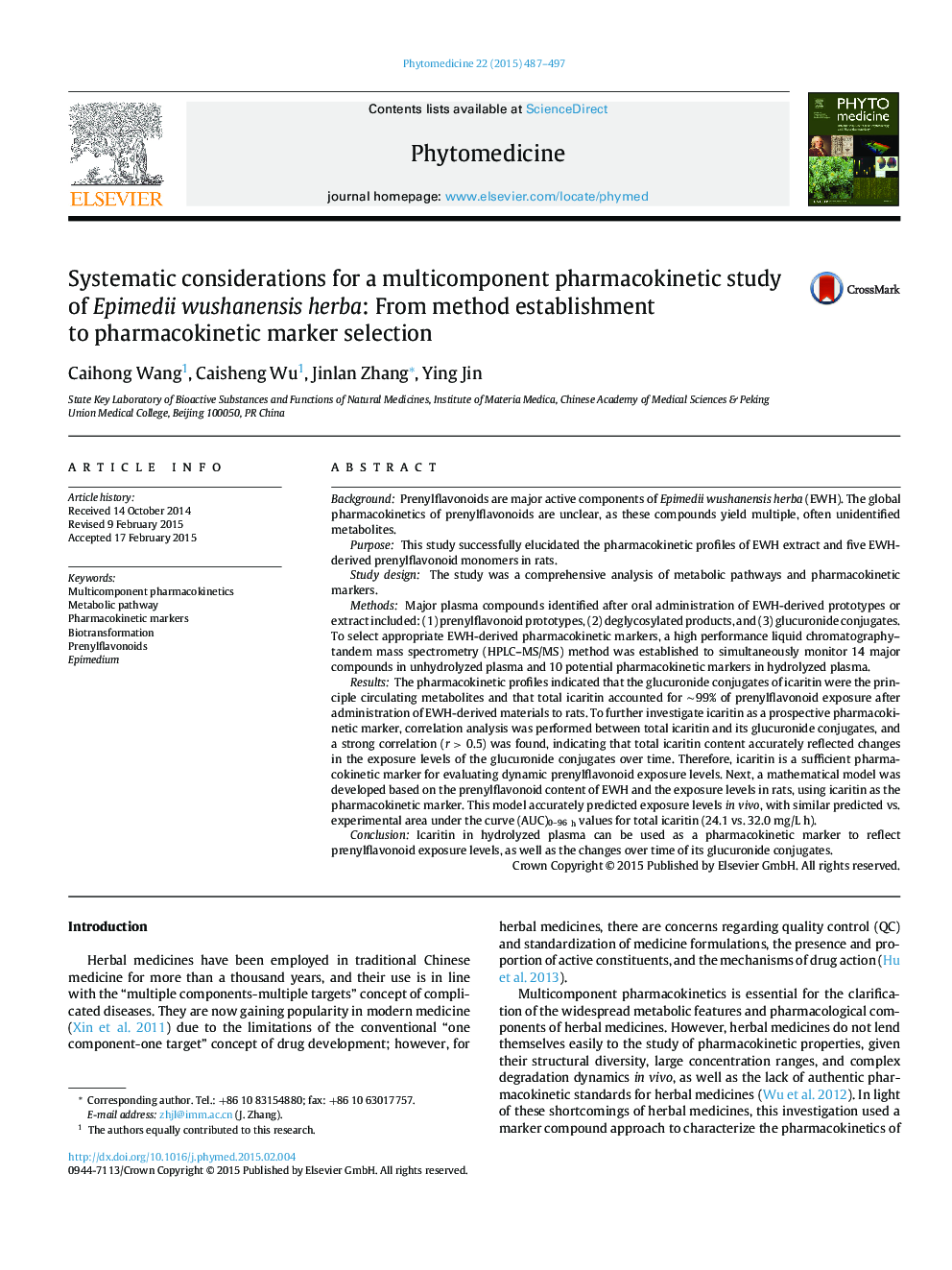| کد مقاله | کد نشریه | سال انتشار | مقاله انگلیسی | نسخه تمام متن |
|---|---|---|---|---|
| 2496408 | 1116134 | 2015 | 11 صفحه PDF | دانلود رایگان |

BackgroundPrenylflavonoids are major active components of Epimedii wushanensis herba (EWH). The global pharmacokinetics of prenylflavonoids are unclear, as these compounds yield multiple, often unidentified metabolites.PurposeThis study successfully elucidated the pharmacokinetic profiles of EWH extract and five EWH-derived prenylflavonoid monomers in rats.Study designThe study was a comprehensive analysis of metabolic pathways and pharmacokinetic markers.MethodsMajor plasma compounds identified after oral administration of EWH-derived prototypes or extract included: (1) prenylflavonoid prototypes, (2) deglycosylated products, and (3) glucuronide conjugates. To select appropriate EWH-derived pharmacokinetic markers, a high performance liquid chromatography–tandem mass spectrometry (HPLC–MS/MS) method was established to simultaneously monitor 14 major compounds in unhydrolyzed plasma and 10 potential pharmacokinetic markers in hydrolyzed plasma.ResultsThe pharmacokinetic profiles indicated that the glucuronide conjugates of icaritin were the principle circulating metabolites and that total icaritin accounted for ∼99% of prenylflavonoid exposure after administration of EWH-derived materials to rats. To further investigate icaritin as a prospective pharmacokinetic marker, correlation analysis was performed between total icaritin and its glucuronide conjugates, and a strong correlation (r > 0.5) was found, indicating that total icaritin content accurately reflected changes in the exposure levels of the glucuronide conjugates over time. Therefore, icaritin is a sufficient pharmacokinetic marker for evaluating dynamic prenylflavonoid exposure levels. Next, a mathematical model was developed based on the prenylflavonoid content of EWH and the exposure levels in rats, using icaritin as the pharmacokinetic marker. This model accurately predicted exposure levels in vivo, with similar predicted vs. experimental area under the curve (AUC)0–96 h values for total icaritin (24.1 vs. 32.0 mg/L h).ConclusionIcaritin in hydrolyzed plasma can be used as a pharmacokinetic marker to reflect prenylflavonoid exposure levels, as well as the changes over time of its glucuronide conjugates.
Figure optionsDownload high-quality image (213 K)Download as PowerPoint slide
Journal: Phytomedicine - Volume 22, Issue 4, 15 April 2015, Pages 487–497